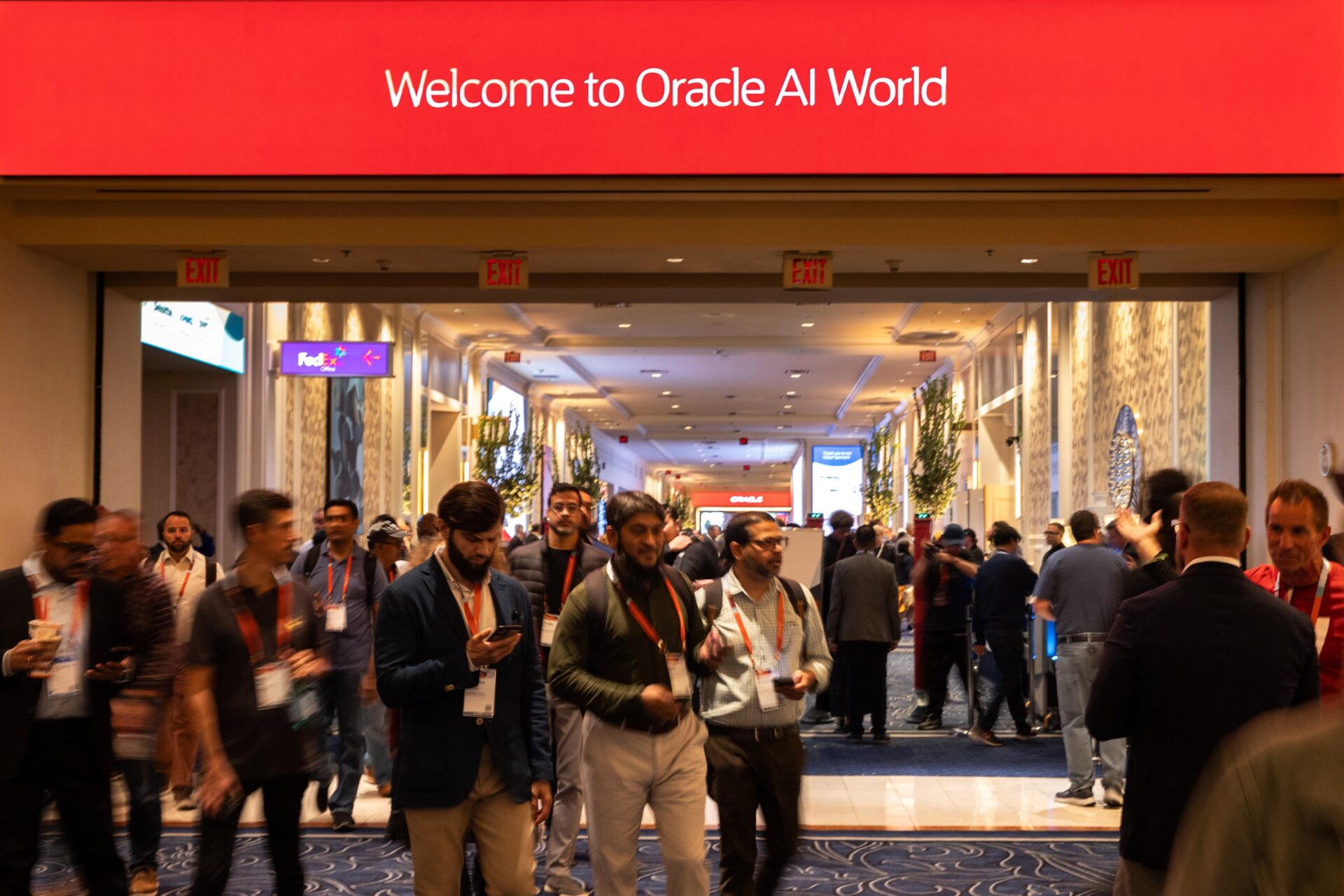
At its annual Oracle AI World conference in Las Vegas last week, Oracle made one thing unmistakably clear: AI is no longer an optional add-on. It is now built into the core of the enterprise technology stack to power day-to-day business workflows and operations, the cloud and database giant believes.
Oracle’s new Open AI Data Platform launched at its annual customer event focuses on helping customers use their own data to make faster decisions, streamline operations, and unlock new value. It joins Microsoft, Google and Amazon Web Services in the escalating race to help enterprises harness AI.
Oracle’s pitch though, is somewhat different. It brings together its strengths in IT infrastructure to focus on practical AI.
As Oracle founder and chairman, Larry Ellison, said in his keynote speech: “Bring the (large language) model you want, train it with public and private data, and keep it private and secure.”
That message, echoed by Oracle’s new co-CEOs Mike Sicilia and Clay Magouyrk, reinforced the company’s position that AI is an enabler, not a replacement for human capability. AI helps people do their work better, they emphasised, not replace them
It might sound cliché in an industry awash with AI hype and research reports that suggest AI deployments so far have delivered little commercial success.
Yet at Oracle AI World, the sentiment had support. Several CEOs, CIOs, and technology leaders from global corporations went on stage to share real-world examples of Oracle’s AI in action in workflows and operations.
Ravi Simhambhatla, the chief information officer of Avis Budget Group, described how Oracle Database 23ai enabled employees to query data in plain English and automate procurement decisions. No coding was required.
“AI stands for augmented individuals,” he said, stressing that the technology empowers workers rather than replaces them.
Peter Hoeschele, vice-resident of infrastructure and industrial compute at OpenAI, offered a glimpse of what is around the corner. Speaking during Magouyrk’s keynote, he revealed that OpenAI and Oracle are building some of the world’s most powerful computing clusters, capable of training and serving next-generation AI models in real time.
This is the industrialisation of compute, he said, and a move away from isolated data centres to interconnected, intelligent networks that dynamically adjust computing power as AI models evolve. “We are past the point of separating training and inference,” he added, pointing to a future where learning and inferencing or execution happen simultaneously.
While there were senior technology leaders from Asia attending the event, none took to the stage to share their experiences. They had not been cleared by their organisations to speak to the media.
Senior Oracle leaders for Asia-Pacific, however, say that across the region there is enormous potential for its AI platform to accelerate business transformation.
The region is tech-savvy and there are large corporations eager to use AI to gain competitive advantage, noted Chris Chelliah, Oracle’s senior vice-president, technology & customer strategy, Japan and Asia Pacific. But many do not know where to start, he added.
With the Oracle AI Data Platform, he can now take a customer’s business challenge, and within a two weeks, show the organisation potential solutions, all by querying the Oracle AI Data Platform and refining the solutions.
Speaking to journalists on the sidelines of the event, he said Oracle’s multi-cloud focus should be a major advantage in Asia-Pacific, where Microsoft Azure, Google Cloud, and AWS have numerous regional data centres.
“We can ask customers to describe their resounding problems. We write the AI prompts in English and our AI platform can suggest potential solutions, all this without doing any coding. It’s a completely new way for us to engage our customers.”
“There’s no barrier to adoption,” he added. “We can orchestrate new solutions using data that already resides in these cloud regions.”
Making AI work where the data lives
So what is the Oracle AI Data Platform? It is a multi-cloud and hybrid solution that lets customers use Oracle’s AI capabilities even when their data resides on Microsoft Azure, Google Cloud, Amazon Web Services, other cloud platforms or on-premise systems.
The goal is to enable customers to get their data ready – wherever they reside – for AI and then leverage it to transform every business process.
The new platform unifies much of the data – from customer feedback to sales, logistics and operations – and connects it to AI tools that would generate meaningful insights.
A bank, for example, can detect fraud faster by analysing millions of transactions in real time. A retailer can anticipate stock shortages before they happen while a manufacturer can predict supply-chain disruptions before they escalate.
By combining data and AI in one platform, Oracle promises faster decisions, fewer manual tasks, and smarter business operations.
Many companies struggle to deploy AI because data is complex and often fragmented. Oracle’s platform simplifies this by giving teams from engineers to analysts, a single workspace to build and manage AI projects collaboratively.
Built-in AI agents could automate routine tasks like generating reports or sending alerts when performance changes. These digital assistants were also intelligent, able to turn data into intelligence, helping employees make better, faster decisions.
This strategy reinforces Oracle’s key strengths in data management, governance and security. Customers keep full control of their information while Oracle ensures it remains accurate, private, and compliant. Running on Oracle Cloud Infrastructure, the platform can handle vast amounts of data – a key requirement for industries like finance, healthcare, and manufacturing where reliability is non-negotiable.
Founded in 1977 as a database company by Larry Ellison, Oracle has kept pace with the industry, evolving over the past 48 years to a cloud and then more recently to an AI tech giant. Currently Oracle’s valuation is about US$823 billion, according to Yahoo Finance, due to its pivot to AI and massive cloud infrastructure, including data centre contracts.
Ellison, 81, is Oracle’s chairman and chief technology officer. A month ago, Mike Sicilia and Clay Magouyrk were appointed co-CEOs after Safra Catz’s stepped down from the role to become the company’s vice-chairman.
Oracle AI World was held around the same time as another software giant, Salesforce, also ran its annual customer event in San Francisco from October 14 to 16. There, it unveiled the Agentic Enterprise, its vision for the enterprise of tomorrow.
In such an enterprise, a team operates with intelligence and every employee would have an AI partner to help in its work. It also updated Agentforce 360 platform which integrated AI agents across its entire product suite and agentic IT service.






